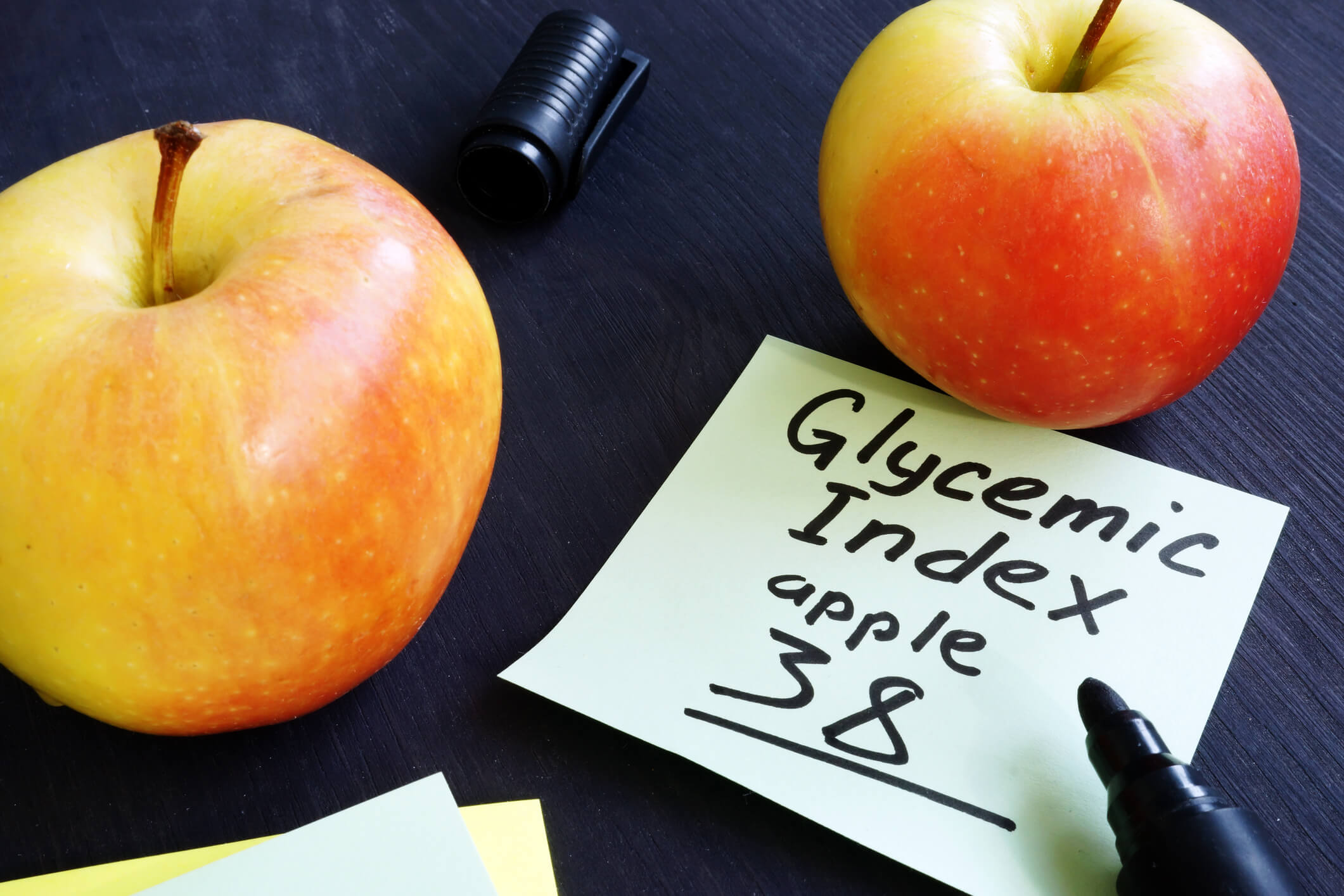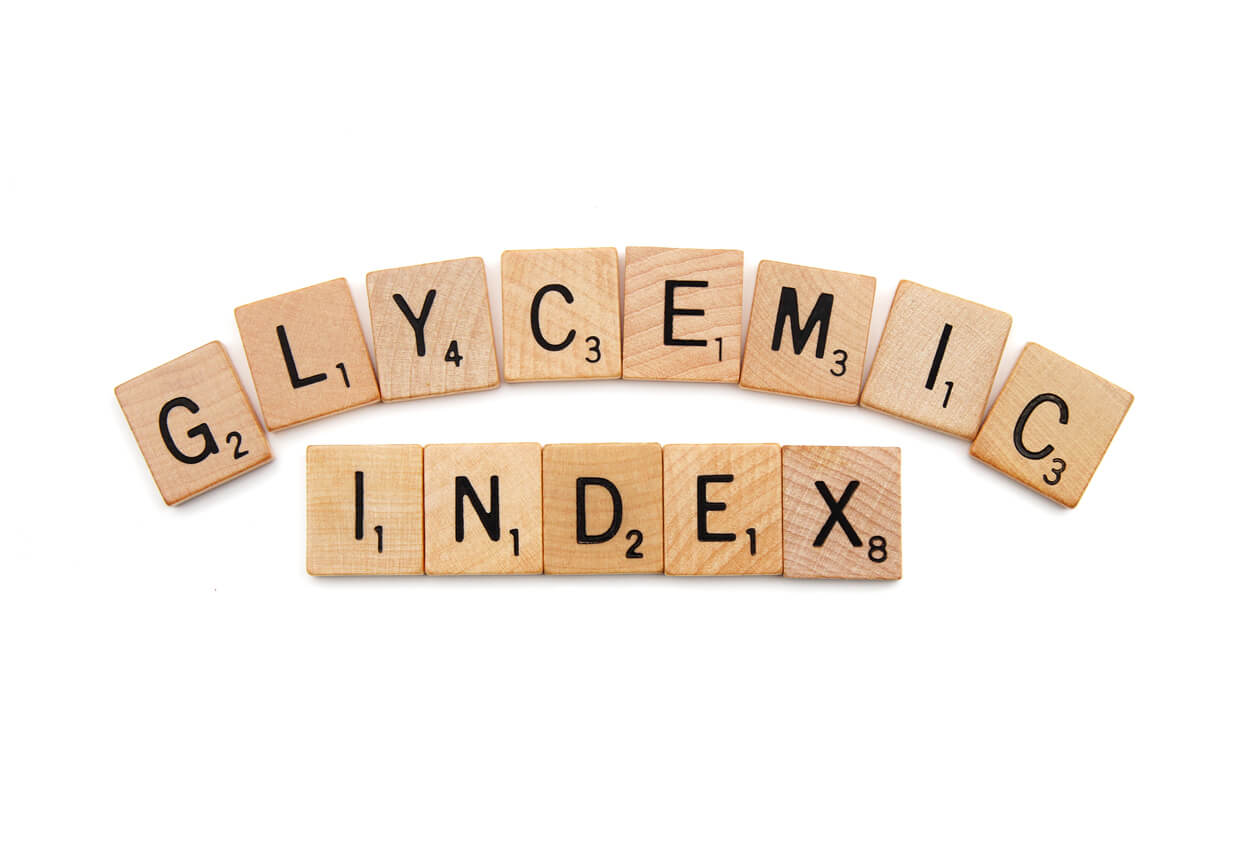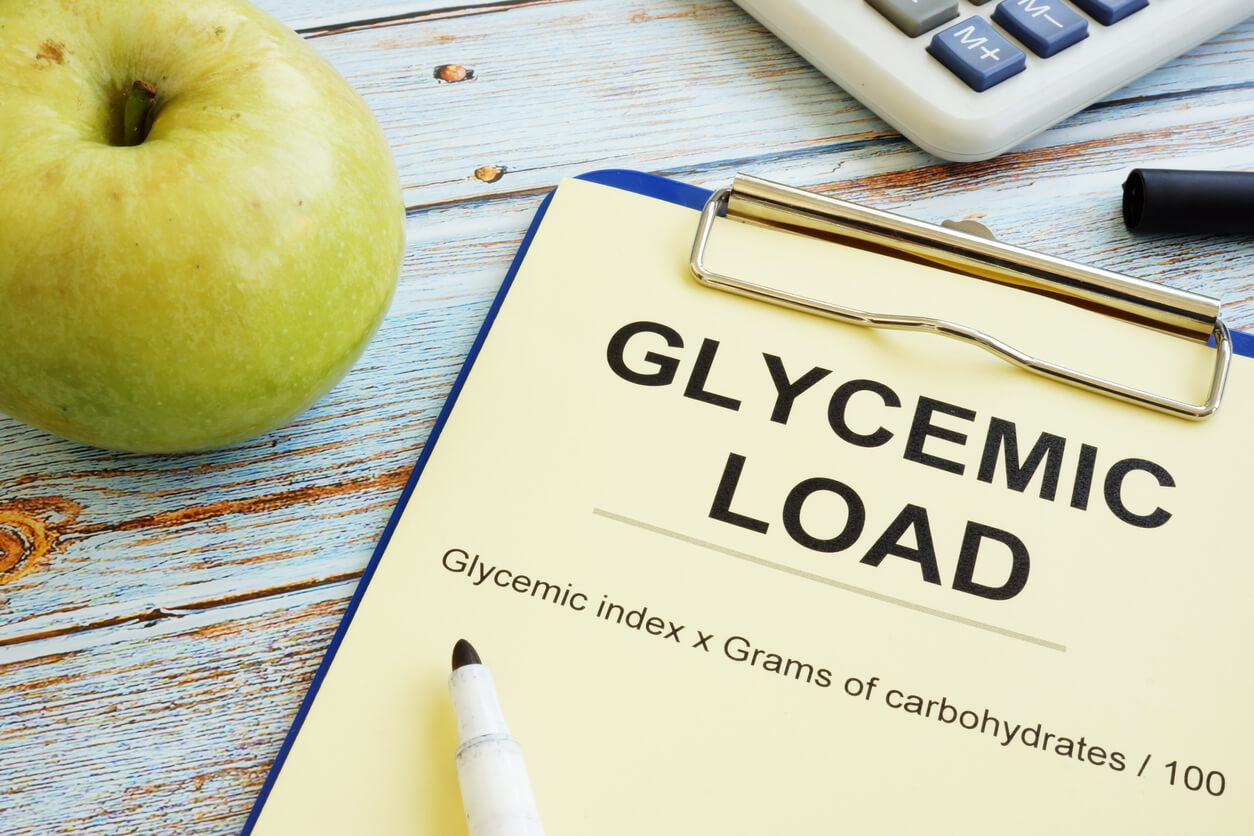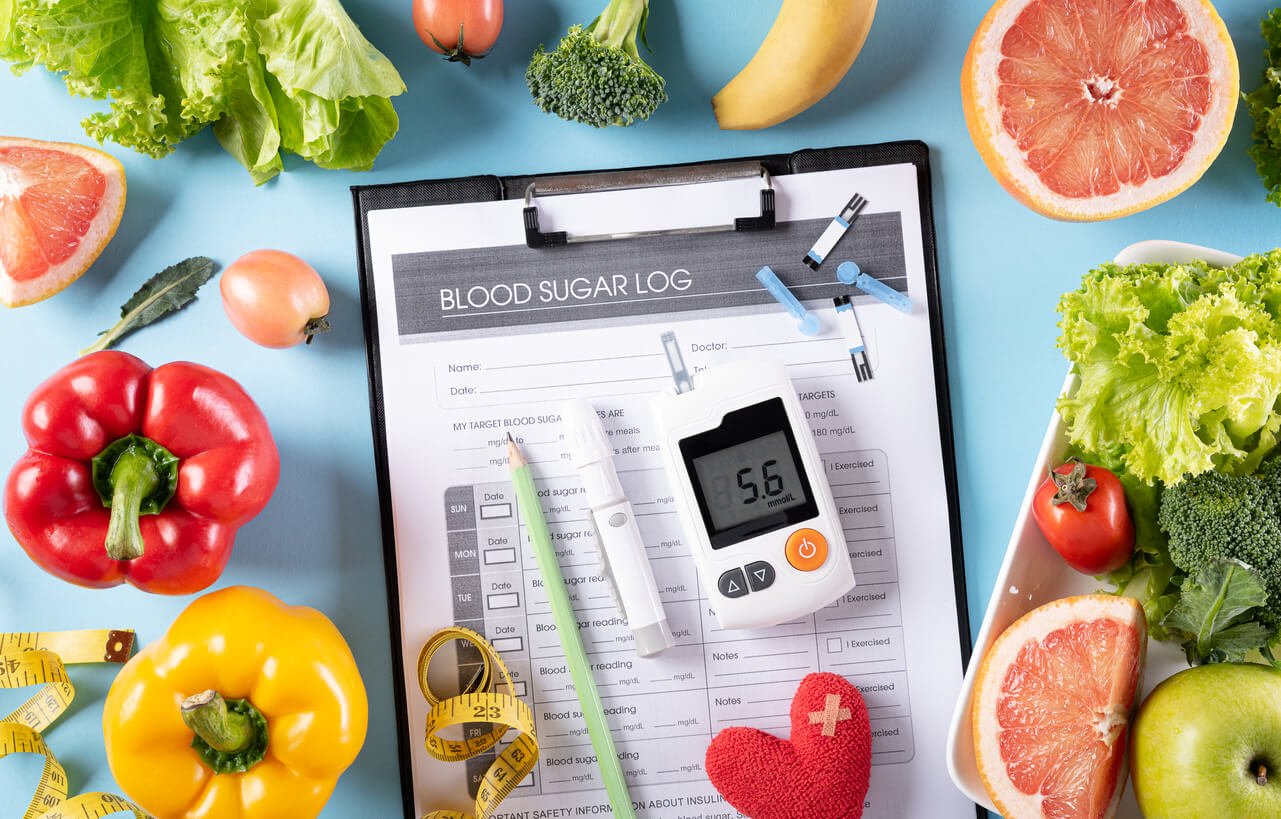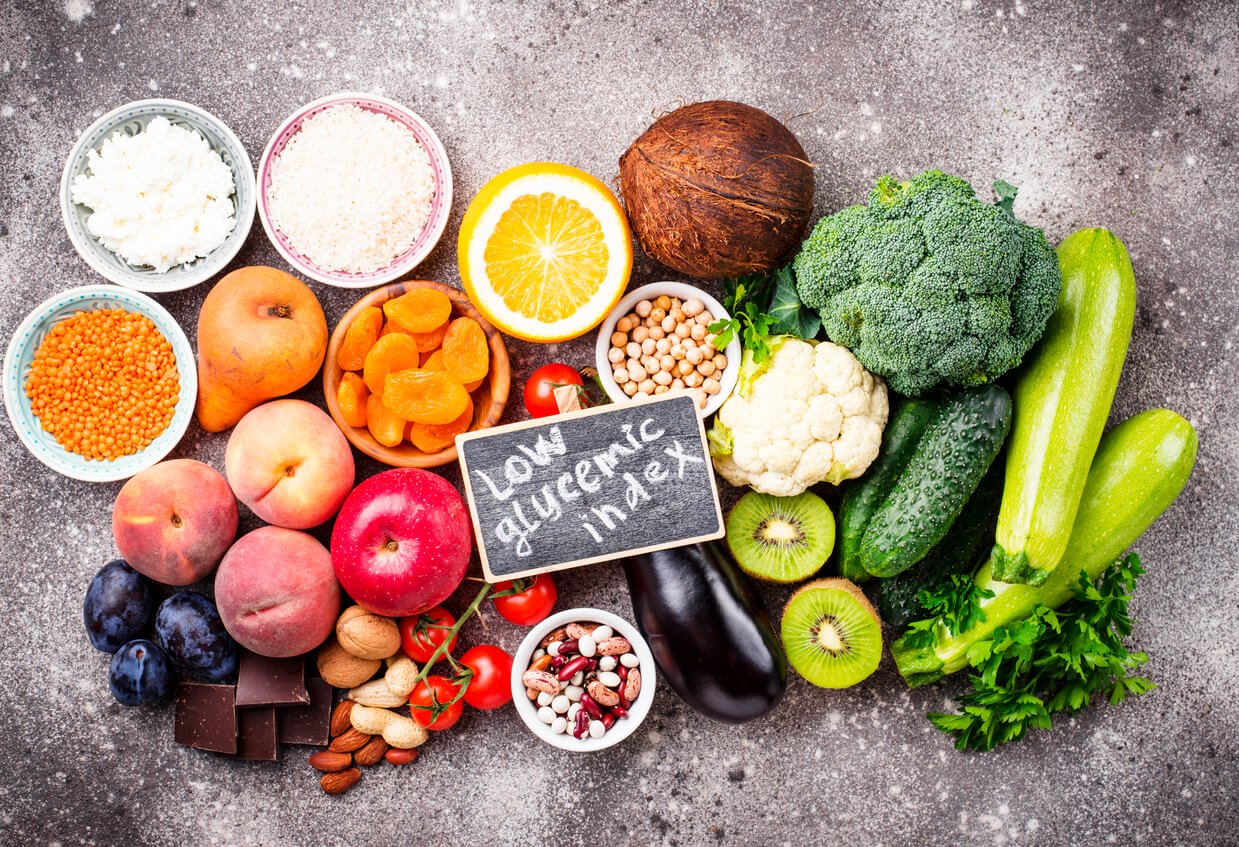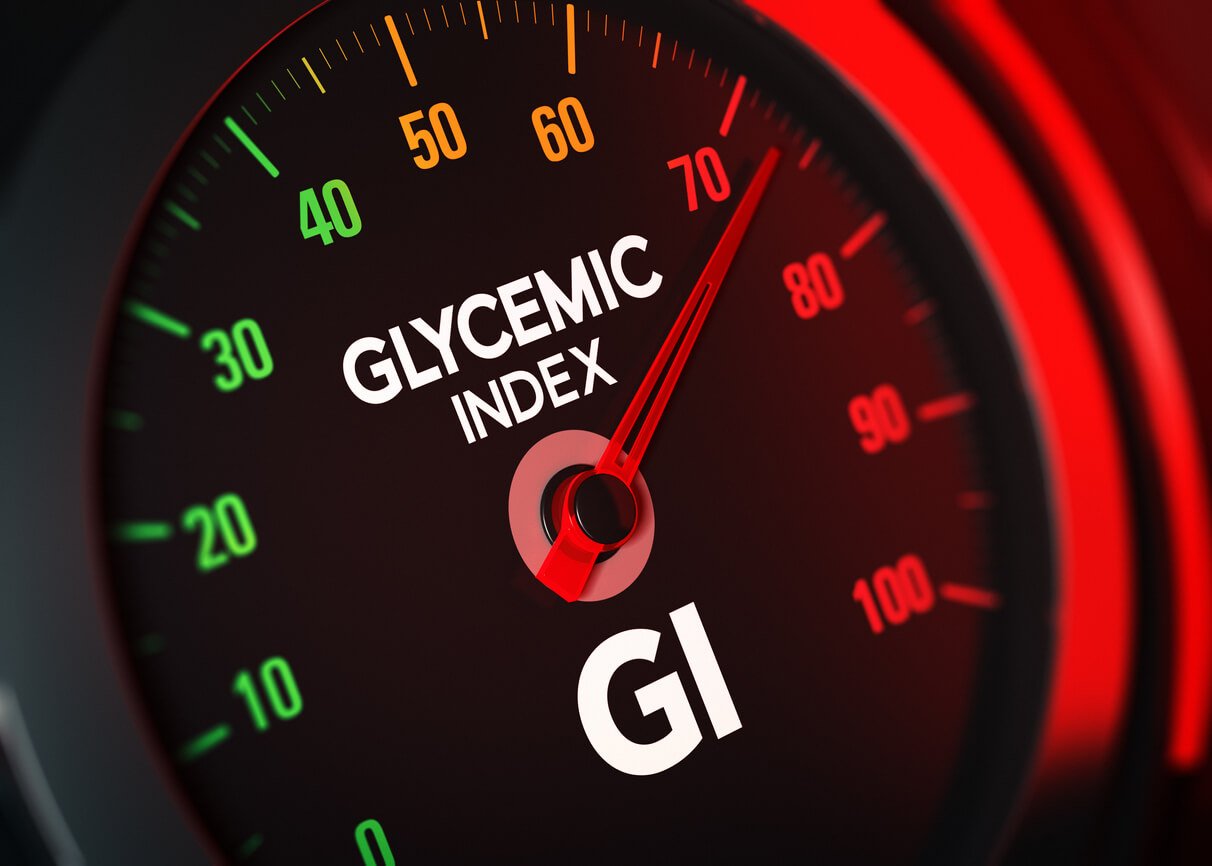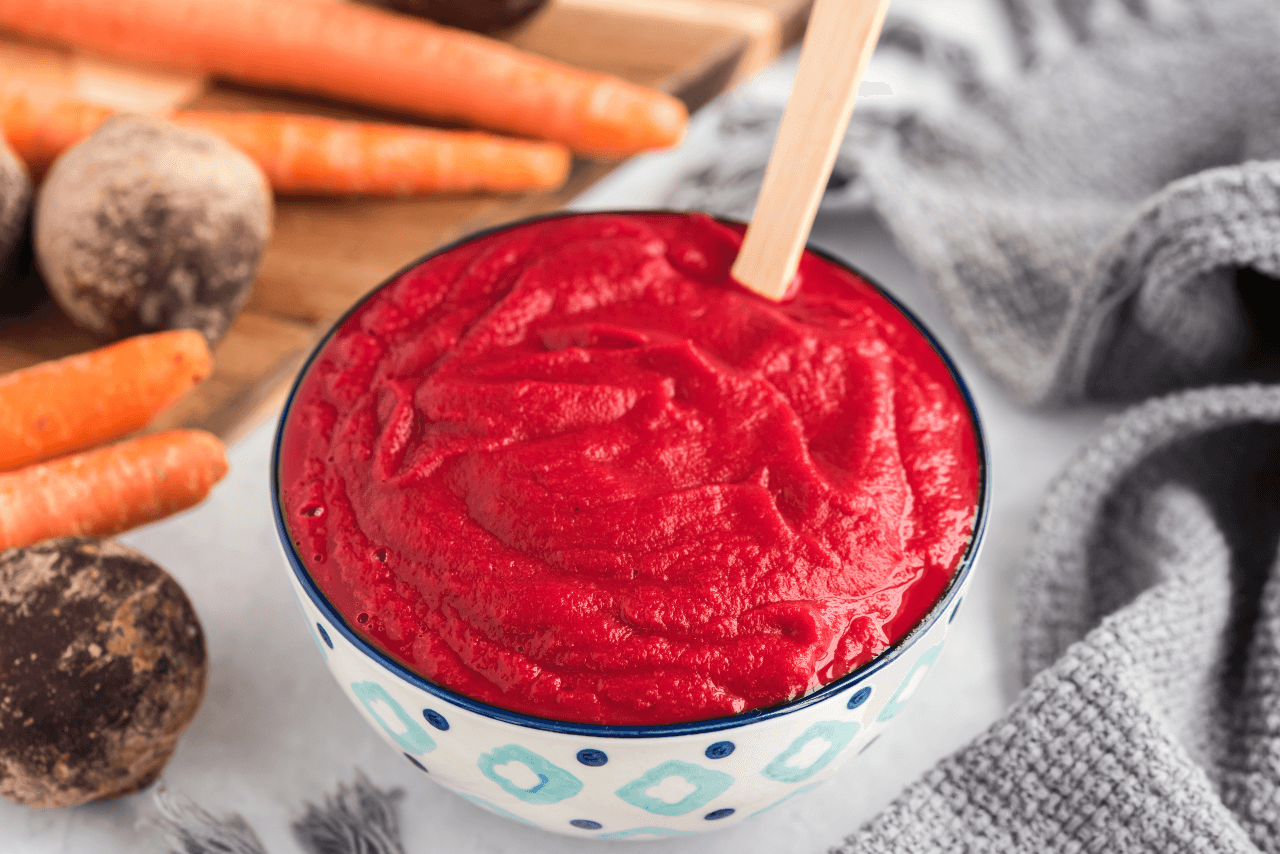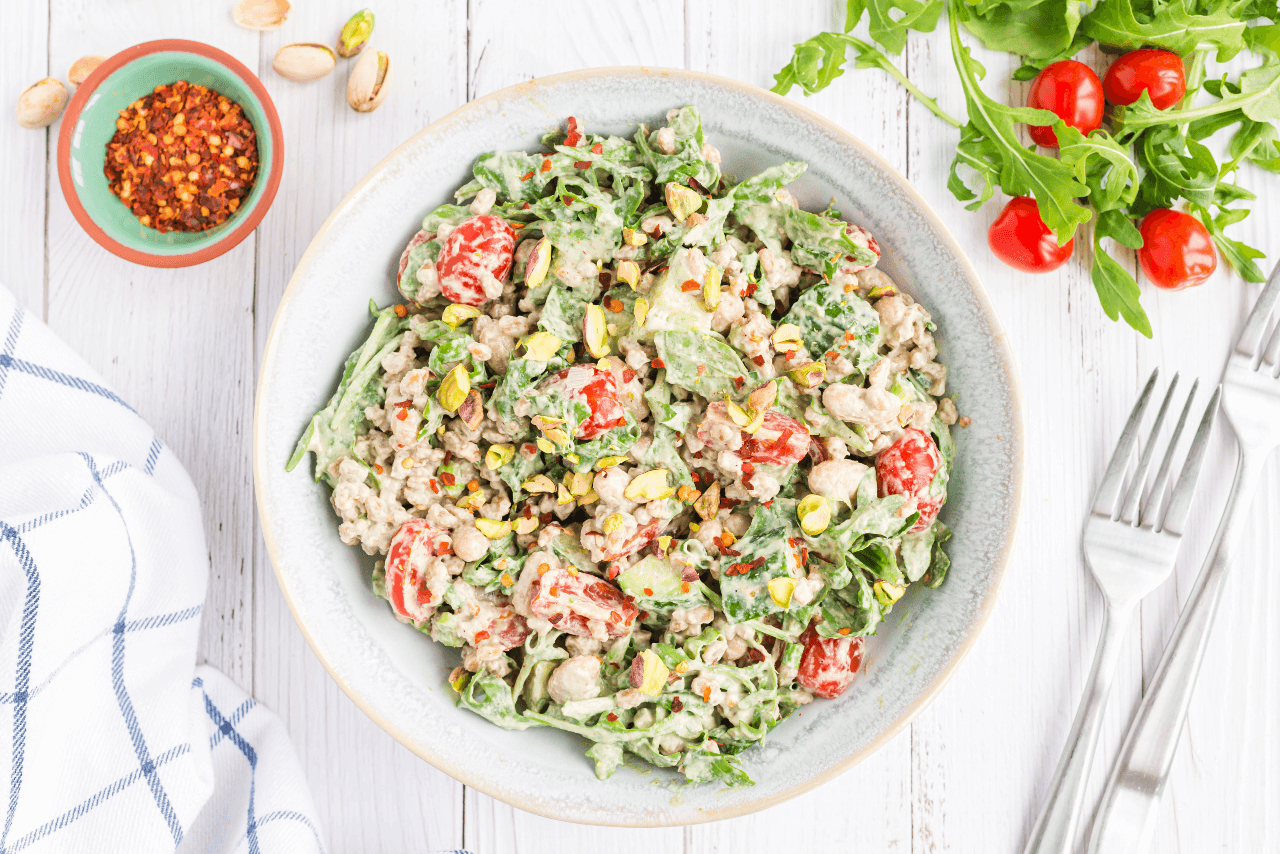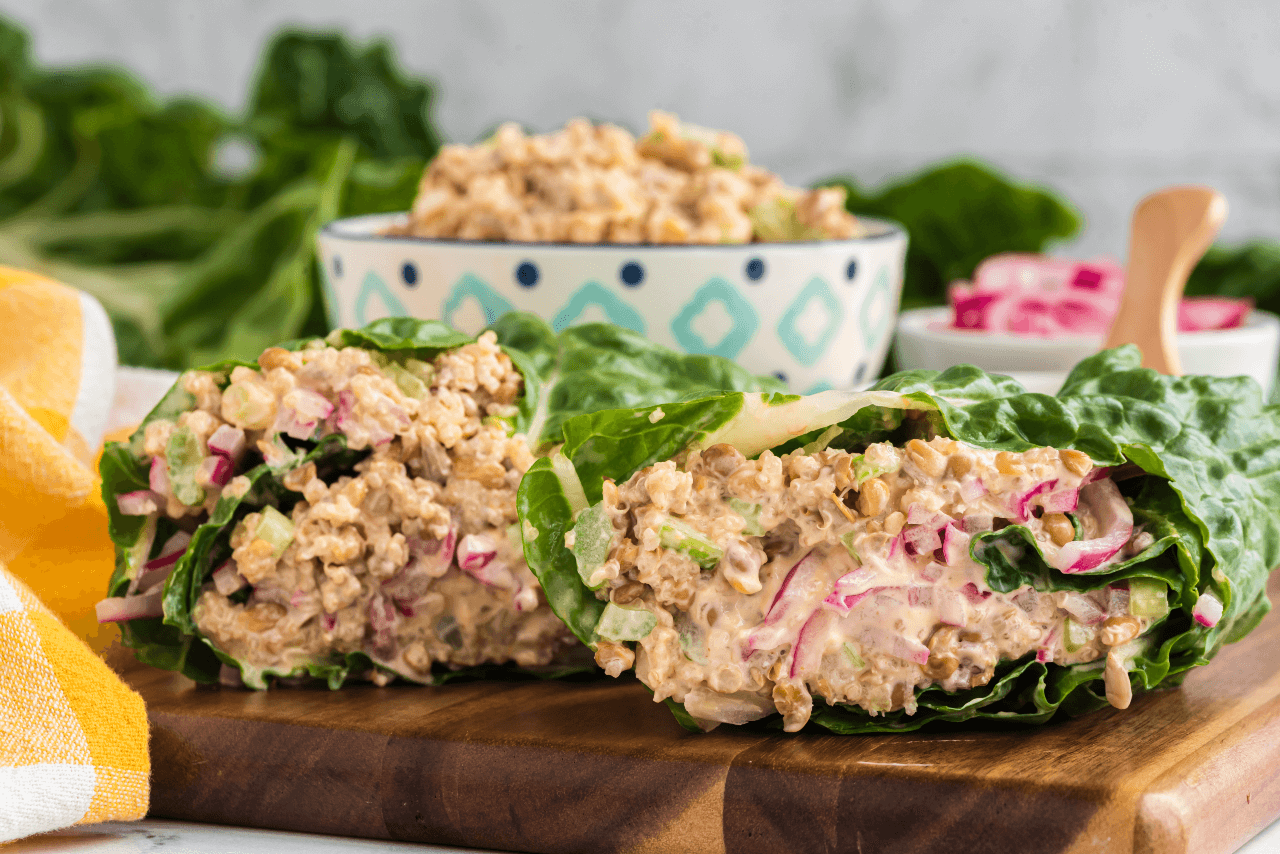The glycemic index is often associated with diabetes control, but it has also has uses in the management of other chronic conditions like heart disease, obesity, and even epilepsy. If you’ve been diagnosed with one of these conditions, especially diabetes or prediabetes, your healthcare provider may recommend you use the glycemic index as a tool for dietary planning.
But what is the glycemic index? How exactly can it help you with your health? What qualifies as a low-glycemic versus high-glycemic food? And what does the evidence say about the index’s usefulness?
What Is the Glycemic Index?
The glycemic index (or GI) assigns a number to carbohydrates on a scale from 0 to 100 based on how much they raise blood sugar (or glucose) levels after eating. Foods that have little effect on blood sugar have lower GI values, while those that tend to spike blood sugar the most have higher ones. The GI scale is calibrated with pure glucose assigned the value of 100.
The GI scale was developed by two physicians, David Jenkins and Thomas Wolever, in 1981. They assigned the first values by measuring how a specific amount of glucose raised study participants’ blood sugar over a two-hour time frame.
Here’s how the test goes: Ten or more people are given a particular food — an apple, say, or piece of watermelon, or a pretzel — and their glucose is monitored for the next two hours to see how high it goes. The same cohort is then also fed pure glucose sugar as a comparison. If the apple raises blood sugar half as much as the sugar, it’s assigned a value of 50. If the pretzel spikes blood glucose 73% as much as the sugar, its GI value is 73. And so on.
However, you might be thinking, what about volume? Surely more of a food will raise blood sugar levels than less of it. Are they comparing apples and oranges here, or, more starkly, apples and watermelons?
Well, it’s complicated. Jenkins and Wolever did attempt to account for portion size by standardizing the test portions. But they didn’t do it by comparing equal volumes (say, half a cup) or equal weight (like, four ounces). Instead, they decided that each test food must contain 50 grams of carbohydrates.
How useful is this, really? Well, in real life, many foods don’t typically get eaten in whatever quantity equates to 50 grams of carbohydrates.
The Difference Between Glycemic Load & Glycemic Index
That’s why the glycemic load (or GL) was created. The GL is used in nutrition research and dietary advice to factor quantity in addition to carbohydrate quality. Glycemic load measures how much a typical serving of a food impacts blood sugar (as opposed to 50 grams of carbohydrates’ worth).
The GL is different from the GI, but you may see both numbers when looking up a food as both are used. The GL takes into consideration how much of the food people typically eat, and thus the likely impact on blood sugar levels. Some experts believe that the GL gives a more realistic picture of how foods affect blood sugar.
One way to think about this is to consider a riddle I heard when I was a kid: What’s heavier, a ton of feathers or a ton of lead? The answer (they weigh the same; a ton is a ton) is a little counterintuitive if you’re just thinking of the relative weights of feathers and lead. After all, a ton of lead can fit into a carry-on bag, while a ton of feathers could fill about 1,000 queen-size bed comforters.
When it comes to the glycemic index, foods high in water and fiber are like feathers, and processed carbs are like lead. That is, it takes a lot more apples to reach 50 grams of carbohydrates (about two large apples, which weigh close to a pound) than Pepperidge Farm Milano cookies (6 cookies, or roughly ⅓ of a pound).
Calculating Glycemic Load
When you know a food’s GI, you can calculate its GL by multiplying the GI by the number of carbohydrates you’re eating and dividing by 100.
GL = (GI x the amount of carbohydrate) ÷ 100
Here’s an example. Sweet raw cherries have a GI of 62. If you eat a cup of pitted cherries, you calculate their glycemic load by first looking up the carbohydrate grams in one cup. You can do this at various online food databases, such as NutritionData.self.com. There you’ll discover that one cup of pitted cherries delivers 25 grams of carbohydrates. Now, you can plug the two variables into the equation to find out the GL:
GL = (62 x 25) ÷ 100 = 15.5
But when you calculate the number, what does it actually mean? For optimal health, and to support blood sugar levels, the Glycemic Index Foundation — an Australian nonprofit raising awareness about a low GI diet — recommends keeping your daily glycemic load under 100. So a cup of pitted cherries still leaves you room for 84.5 more GL points (100 – 15.5 = 84.5).
Still, the GI continues to be more widely used than the GL, despite being less relevant to how we actually consume food.
What They Mean for You
So what can GI and GL tell you? In theory, the GI gives you a way to identify which foods contribute slower-acting “good carbs” versus faster-acting “bad carbs” in terms of their impact on your blood sugar.
Multiple factors are involved in how fast a specific food will raise your blood sugar. And two foods with the same carbohydrate content can have different GI numbers. Some examples include how refined or processed the carbohydrate is, the cooking method used to prepare the food, the chemical and physical properties of the food, and its fiber, protein, fat, and acid content.
In general, the more a food has been cooked or processed, the higher the GI will be. This is because physical and temperature changes made to the food before you eat it cut down on some of the time your body has to spend on digesting it. For example, mashed potatoes have a higher GI than a baked potato, which is also higher on the GI than a raw, untouched potato (not that we recommend eating raw potatoes to lower your GI, just to be clear). The American Diabetes Association even says that al dente pasta has a slightly lower GI than pasta that has been cooked longer.
One way to think about this is to imagine taking a match to a pound of wood. If that wood is in one piece, it may not catch fire at all. If, on the other hand, that wood has been turned into a pound of crinkled newspaper, it could ignite rapidly upon ignition. Same substance, but differently processed.
The GI of fruits also increases as they ripen. A green banana has a lower GI than a ripe banana that’s starting to develop brown spots. This explains why a ripe banana has a sweeter flavor, and tastes a whole lot better, than a green one. We’ve evolved to prefer foods that give us a big sugar spike because they tend to have more calories, which can be a handy tendency in a world of constant food insecurity and intermittent famine.
Glycemic Index, Glycemic Load, and Health
Research shows that the glycemic index and glycemic load can both be useful tools to help you eat for health — and to manage specific conditions. Below are how the GI and GL can be best used for certain health conditions.
Diabetes
The GI and GL are primarily used as tools for managing diabetes and prediabetes. Specifically, they help individuals with diabetes gain awareness of how certain foods can impact their blood sugar readings. For instance, high GI and GL foods can spike blood sugar quickly, which can be dangerous for someone with diabetes. Plus, the American Diabetes Association says the glycemic index may be useful to help fine-tune blood sugar when adjustments are needed in a diabetes management regimen.
Research has confirmed that the GI and GL can be useful tools for optimal glycemic control. A 2019 meta-analysis published in the American Journal of Clinical Nutrition examined 54 randomized controlled trials in adults or kids with impaired glucose tolerance, type 1 diabetes, or type 2 diabetes. They found that low GI diets were effective at reducing glycated hemoglobin (HbA1c), fasting glucose, BMI, total cholesterol, and LDL “bad” cholesterol, but didn’t impact fasting insulin, HDL “good” cholesterol, triglycerides, or insulin requirements. Overall, current evidence suggests that low GI diets may be helpful in blood sugar management and may even help in achieving a healthy body weight among people with diabetes.
Other studies support this finding, too. A 2018 review found that a low GI diet is more effective for controlling fasting blood glucose in comparison to a higher GI diet among people with type 2 diabetes.
Learn what brand-new scientific research says about how to prevent and reverse type 2 diabetes — using food and free lifestyle tips.
Join the FREE
Watch Here
Cardiovascular Disease
Research shows that consuming a diet based on foods that contribute a lower GI and GL may be better for your heart health as well.
In a 2021 study published in the New England Journal of Medicine, diets with a high glycemic index were associated with an increased risk of a major cardiovascular event or death, both among participants with preexisting cardiovascular disease and without.
And in a large prospective study involving 338,325 participants over approximately 13 years, researchers aimed to determine whether GI and GL are associated with heart disease risk in both sexes. They concluded that a high GL, or a diet that triggers a high glucose response, is associated with a greater risk for developing heart disease.
Lastly, an expert analysis of the Prospective Urban Rural Epidemiology (PURE) study published by the American College of Cardiology in 2021 concluded that among adults with established heart disease, a diet based on higher GL foods was associated with higher risk of both heart disease events and all-cause death.
Weight Management
The GL and GI trends in your diet can also be important for helping or hindering healthy weight management goals.
A 2019 meta-analysis published in the American Journal of Clinical Nutrition examined data from 54 randomized controlled trials in adults or children with impaired glucose tolerance, type 1 diabetes, or type 2 diabetes. They found that diets with a lower GI may help lower body weight among people with prediabetes or diabetes.
A 2015 systematic review and meta-analysis examined how high or low glycemic foods affected weight of overweight or obese children and adolescents. Overall, they found that a primarily low GI or GL diet was more beneficial for weight management for this population than a higher GI or GL diet.
And in a 2015 Brazilian study, 19 participants were randomly assigned to either eat two daily low-GI or high-GI meals, for 45 days in a row. Their normal everyday food intake was assessed before beginning, and then their intake, body composition, and other anthropometric measurements were evaluated every 15 days. At the end of the 45 days, other biochemical and metabolic markers were also assessed. The authors found that consumption of two daily low GI meals for 45 consecutive days had a positive effect on obesity control, whereas, the consumption of high GI meals had the opposite effect.
Epilepsy
While you may have heard that a strict ketogenic diet can help manage epileptic seizures in children, there’s also evidence that a low GI or GL diet can also offer therapeutic benefits for this condition. One of the reasons this is attractive to some people is that while the ketogenic diet may have benefits for people with epilepsy, it is also associated with a new set of problems, including lower life expectancy. A diet that is low on the glycemic index offers a less restrictive approach, making it easier to incorporate many of the healthy foods that tend to be left out of a ketogenic diet.
The low glycemic index treatment (LGIT) is a form of dietary therapy for epilepsy. It was first described as such in 2005, after doctors observed that some children were experiencing noticeably more seizures after eating high GI foods.
Researchers have helped identify that stabilizing blood glucose seems to help control seizures in some children, as well as adults. For instance, a 2017 study among 36 children with epilepsy were treated with LGIT for one year, and their seizure outcomes and side effects were observed. The authors found that while few children on LGIT received total freedom from their seizures, this dietary approach was effective for reducing seizure frequency.
And a 2018 review examined eight studies on LGIT and epilepsy management, concluding that while currently available research has found mixed results, this approach does appear to be beneficial for patients with intractable epilepsy.
How to Use the Glycemic Index
The glycemic index can be a useful tool if you’re diabetic, suffering from cardiovascular disease, obese, or epileptic. But even if you don’t have one of these conditions, you can still use the index and benefit from it. Keeping a steady blood sugar is important for good health both in the short-term and long-term.
If you’re curious about the glycemic index of a food you like, you can easily search for it on the official GI website maintained by the University of Sydney. You can search by food name, category of food, country of origin, GI number, GL number, serving size, and carbs per serving.
All of the foods in the GI database are categorized into GI and GL ranges, which are outlined below. The range indicates how much of an impact the food is expected to have on your blood sugar after you eat it, with low being the least impact.
Glycemic index ranges:
- Low GI: 55 or less
- Medium GI: 56 to 69
- High GI: 70 or higher
Glycemic load ranges:
- Low GL: 10 or less
- Medium GL: 11 to 19
- High GL: 20 or higher
Foods that fall into the low GI and low GL ranges are generally considered healthier options, especially for people with one of the conditions mentioned in the previous section.
Other Ways to Find Out GI or GL
You can also find the GI and GL of foods by using a nutritional database like DietGrail or a cheat sheet like this one.
There are also other ways to find the GI of different foods. For instance, some packaged foods include this information on their labels. You can also find GI lists for many common foods by doing a simple internet search, as many people have helped compile data. And of course, if you’re curious about using the glycemic index to help plan your diet, working with a dietitian or nutrition counselor is a great way to receive individualized help.
High Glycemic Foods vs Low Glycemic Foods
High glycemic foods tend to be those with simple, or refined, carbohydrates that are high in glucose and other simple sugars that get absorbed quickly in the bloodstream. In other words, these foods lack fiber, an incredibly important nutrient that helps slow the digestion of carbs so that glucose doesn’t saturate your bloodstream as quickly.
Examples of high glycemic foods that are lacking in fiber include:
- Bread (especially white bread)
- White Rice
- Cereal and cereal bars
- Cakes, cookies, and other sweets
- White potatoes and french fries
- Chips and crackers
- Soft drinks
Some fruits also land high in the GI. For instance, watermelon has a GI of 72-78 although, because it’s mostly water, it only scores a 7.2 on the glycemic load scale. Dried fruits, like dates, raisins, and cranberries are also high on the glycemic scale. But don’t let that scare you off; these foods still have tons of health benefits and can certainly be a part of an overall healthy diet.
Most whole fruits and vegetables, whole grains, nuts, seeds, and legumes fall within the low to mid glycemic range. Though they tend to contain a decent amount of carbohydrates, they also offer protein, fat, water, and/or fiber. These nutrients help to slow the digestion and absorption of the carbohydrates, preventing dramatic spikes in your blood sugar.
Problems with the Glycemic Index
It’s important to eat a well-balanced diet with nutrient-dense, high-fiber foods. Doing so will slowly increase blood sugar levels rather than cause them to spike and drop quickly. The glycemic index can help with that.
That said, relying solely on the glycemic index to decide whether foods or combinations of foods are healthy can lead you astray. While the GI scale can be helpful in some instances, and research does indicate that an overall lower GI diet appears to be better for your health, it’s not an all-encompassing guide for how to eat. After all, low GI doesn’t always equal healthy food, so other factors still need consideration when using it.
Not All High-Glycemic Foods Are Bad
Some high glycemic foods are generally healthy for most people. One example is the fruit mentioned above, which also contains fiber, antioxidants, vitamins, and minerals that are good for your health and help prevent a dramatic spike in your blood sugar.
Not All Low-Glycemic Foods Are Good
Meat and dairy are also considered low glycemic foods because of their high fat and protein content (remember that foods that do not contain carbohydrates don’t even earn a place on the index). But they can both have detrimental effects on health and the environment in other ways. Consuming a lot of meat has been shown to be pro-inflammatory, which is an underlying contributor to numerous chronic diseases. It can also promote insulin resistance, increase levels of the peptide hormone IGF-1 that is associated with a higher risk for certain cancers, and produces TMAO, a metabolite that increases risk for heart disease. And drinking dairy has been linked to digestive issues, as well as a higher risk for prostate cancer in men.
Other processed foods, like bottled oils that are close to 100% fat, may end up falling in the low to mid glycemic index range as well. But, of course, that doesn’t mean they’re good for you. Processed oils that are high in omega-6 fatty acids are calorie- and fat-dense, but tend to be pro-inflammatory while contributing minimal other nutrients to your diet.
There Are Other Factors Involved in Blood Sugar Impact
Not everyone responds to the glycemic content of foods in the same way. It’s especially important for people with diabetes to be aware of how much a food may impact their blood sugar levels.
And remember that the GI of a food can change depending on different factors, such as the variety of the food (for example, red potato or white potato), its ripeness, how it is prepared (for example, juiced, mashed, or ground), how it is cooked, and how long it is stored.
Overall, the glycemic index is just one metric to consider as you plan your diet. The only way to know for sure how a food affects your blood sugar is to test your blood sugar before and after you eat that food.
Furthermore, high glycemic foods are rarely eaten by themselves, so the glycemic index might not be helpful unless you’re eating a food by itself. Eating foods together in a meal changes their glycemic index and impact on blood sugar, as other foods may contribute fiber, fat, and protein to buffer carbohydrate absorption.
Blood Sugar Balancing Recipes
The tasty recipes below provide lots of flavors, plenty of nutrition, and minimal impact on blood sugar with their whole, unprocessed, plant-based ingredients.
You might remember ketchup as a kid with its sweet flavor made from (high glycemic!) high fructose corn syrup. Now’s the time to make your own nutritious ketchup sweetened with whole foods! Beets and carrots, plus unsweetened applesauce, create a ketchup that is not only lower glycemic, but also bursting with nutrition compared to store-bought ketchup.
You don’t have to stick with just leafy greens to enjoy a low glycemic index salad. Add high fiber and high protein foods like farro and beans, plus tons of veggies, to a big bowl of greens to make it hearty, satisfying, and delicious, while still keeping it low glycemic with the Lemon Basil Farro Salad with White Beans, Arugula, and Tomatoes.
You can also minimize the impact on your blood sugar with the Lentil Quinoa Collard Wraps when you substitute collard greens for flour-based bread. And add high fiber and high protein lentils and quinoa as your base. This wrap has lots of flavor and fun textures!
1. Beet and Carrot Ketchup
It’s time to graduate from the ketchup we knew as kids with processed sugar (high glycemic!) and (un)natural flavorings to the healthy ketchup version with whole foods and healing spices. This ketchup is made with low glycemic beets and carrots, unsweetened applesauce, and whole-food tomato puree. Since it’s made with a variety of wholesome ingredients and is high in fiber, the glycemic index will be low (although boiling the beets and carrots may increase the GI a bit). You can spread it on a veggie burger or baked sweet potato “fries.”
2. Lemon Basil Farro Salad with White Beans, Arugula, and Tomatoes
This incredibly delicious salad is bursting with flavor, texture, and nutrition, including fiber and protein, both of which help to lower the glycemic index of a meal. If you love a salad that offers more than greens, then look no further than this Lemon Basil Farro Salad. Chewy and nutty farro is the hearty base, mixed with filling beans, spicy arugula, sweet tomatoes, savory basil, and bright lemon.
3. Lentil Quinoa Collard Wraps
If you want to lower the glycemic index of your meal, without compromising on nutrition or deliciousness, then look no further than the Lentil Quinoa Collard Wraps. Collard greens substitute flour-based wraps. Lentils and quinoa provide tons of fiber and protein. And the veggies are all low in carbohydrates yet high in fiber, making this wrap a dream for those watching glycemic index and glycemic load!
The Glycemic Index is Just One Tool
The glycemic index is used to determine simple carbohydrate content of food, which can be especially useful for people with diabetes and other conditions that affect blood glucose. However, it’s not meant to be a definitive guide. And it may not be useful for every person. It’s one metric, among many others, for assessing the health impact of a food. Plus, not all high glycemic foods are harmful. And not all low glycemic foods are beneficial.
Using glycemic load rather than glycemic index can help determine food’s effect on blood sugar in the real world. But unless they’re dealing with diabetes or other blood sugar-related challenges, most people will do well when they stick to eating a variety of whole, unprocessed plant foods, rather than relying on the GI or GL to determine dietary choices. And by focusing on complex carbohydrates that are high in fiber, while minimizing ultra-processed carbs that don’t have much nutritional value to offer, you can support your health.
Tell us in the comments:
- Did you know the differences between glycemic index and glycemic load before reading this?
- Have you ever looked up the GI or GL of a food you’ve consumed, or used it as a tool for meal planning?
- What are some ways you can reduce the glycemic contribution of your diet?
Feature image: iStock.com/designer491
